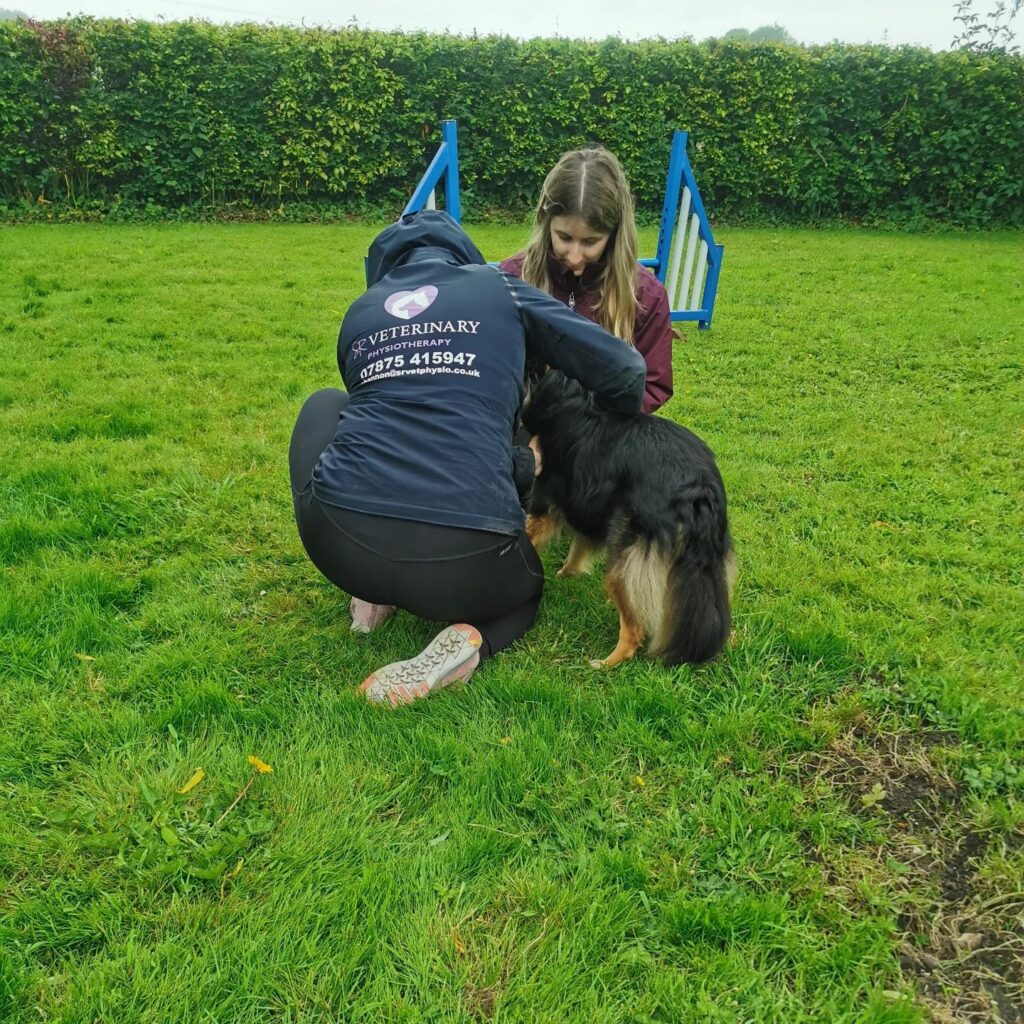Did you know that up to 80% of dogs presented to behaviourists were found to have pain as a causal or contributing factor for the undesirable behaviour presented? Meaning that for 8 cases out of 10 that come to a professional dog trainer or behaviourist may be experiencing pain. Think back to the last time you were in pain, maybe you had a bad back or a toothache. We are never the best version of ourselves when we’re in pain and neither are our dogs.

Why is it important to mitigate pain?
No one likes to be in pain. I certainly didn’t buy dogs to be happy knowing that they are in pain. It’s important to mitigate pain for dogs for other reasons though. Firstly, being in pain releases stress hormones, which contributes to trigger stacking.
Trigger Stacking Interlude
Trigger stacking is the process of stress hormones accumulating inside your dog’s body. The more these accumulate, the more likely your dog is to react in an out of character or exaggerated way than they would otherwise. We’ll be discussing trigger stacking in further depth at the end of next week so stay tuned for more on this.
Mitigating Pain
I’m certainly more grouchy when I’m in pain. If my dogs pull on the lead I’m more likely to respond to this by snapping at my dogs. Dogs are no different. If your dog is in pain and they are moved in a way that hurts then they’re more likely to snap.
Your dog being more grouchy can lead to them being less social. This is hugely important if you have a multi-dog
household or your dog interacts with other dogs regularly in daily life. All it could take is for another dog to brush up against your dog for your dog to snap. They may also avoid social interactions which can cause difficulties if you do lots with other dogs and people.
Dogs that are feeling less social are probably less likely to enjoy walks and other activities you do with them. This means that activities that previously brought your dog joy may start to stress them out. This adds to the stress hormones released in your dog’s body but reduces the activities you can offer to help your dog destress and relax. This contributes to trigger stacking further.
Finally, it’s easy for bad experiences to be learned when pain is involved. If you’ve ever touched a hot pan then you know it hurts and that hot pans should be avoided. It’s not hard to imagine how your dog may learn that other people and dogs approaching can hurt.

Shout out to Shannon at SR Veterinary Physiotherapy for taking wonderful care of our dogs.
Identifying Pain
Dogs can be very stoic about hiding their pain. Their drive to do things like play, chase, train and generally do things they enjoy despite being in pain is high. One of my friend’s dogs was enjoying playing fetch so much that she completely ran the skin off her paw pads and still wanting to go, only stopping when her owner put the ball away after noticing the issue.
As such, identifying pain can be challenging. A trip to the veterinarian is an obvious first choice. Even if your veterinarian says your dog is pain free, a review from a veterinary physiotherapist or massage specialist is worth it for the reassurance that your dog isn’t in pain.
Veterinarians are worth their weight in gold but are general practitioners, like our own doctors. One of my previous doctors signed my back pain off as just needing rest. After said rest and still struggling, I sought out a physio who referred me for an MRI. They wanted to rule out the need for a potential operation. All turned out okay thankfully. The physiotherapist was able to get to the bottom of the issue and tell me what exercises I needed to do to strengthen up to be pain free whereas resting on my GP’s advise didn’t resolve the pain.
Common Painful Conditions
Being aware of conditions that are commonly caused by pain can give you an indication of how likely pain may be.
Here are some common behavioural problems that can be caused by pain:
- sound sensitivity has been strongly linked to musculoskeletal pain
- “resource guarding” of sofas/beds. This can be a response to pain when someone moves a sofa cushion/mattress when a person or another dog sits near to a dog that is experiencing pain
- snapping at hands approaching to touch a dog can be a response to a dog not wanting to be touched somewhere painful. Of note if there are any ear concerns
- hesitancy to have any body part touched
- excessive chewing/licking can be a result of gastrointestinal concerns
Being Sure Your Dog Isn’t In Pain
As our dogs can’t talk, the best way to identify pain in your dog is to request a pain trial. This is where you dog trials low-level pain medication for a number of weeks. Ideally, data of your dog’s behaviour is taken prior to starting this pain trial and you collect data throughout the pain trial to compare once complete. This will tell you if your dog’s behaviour has had any significant change as a result of the pain medication.
Don’t forget to fill in the behaviour survey if you’re taking part in our Functional Foundations June. This is so we can compare response before and after the advice we’ll be giving this month. The link is HERE.
